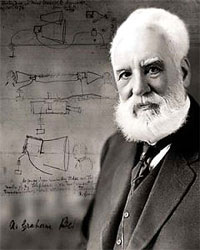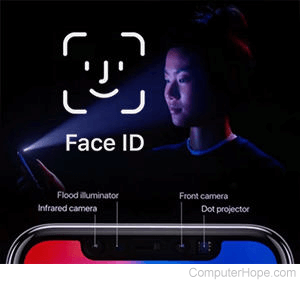Cell phone history
1876

Alexander Graham Bell invented the first telephone, allowing people to talk to each other over great distances.
1917
A patent was filed in 1917 by Eric Tigerstedt for a "pocket-size folding telephone with a skinny carbon microphone."
1947
Bell Labs first proposed the idea of a cell phone and cellular network in 1947.
1957
The CDMA mobile phone technology was first used by Russian military radio engineer Leonid Kupriyanovich in 1957 when he built an experimental wearable mobile phone that utilized CDMA.
1973

The cell phone was invented by Dr. Martin Cooper and a team of developers at Motorola in 1973.
The first call made on a cell phone was in 1973 by Dr. Martin Cooper.
1979
The first cellular network in the world using analog technology was launched in Japan in 1979 by Nippon Telegraph and Telephone. It was considered the birth of the first generation of cellular networks, or 1G.
1987
Nokia released its first mobile phone, the Mobira Cityman 900, in 1987, which utilized NMT-900 networks.
1983
Motorola released the DynaTAC 8000x cell phone in 1983, the first cell phone available on the commercial market. It provided 30 minutes of talk time and cost $3,995.
1990
The GSM (Global System for Mobile communication) standard for mobile phone communications was defined in 1990.
1991
Radiolinja was the first company to launch a second-generation cellular network, or 2G, in Finland in 1991, using the GSM standard.
Giesecke & Devrient developed the first SIM card in 1991 for use by Radiolinja and its GSM cellular network.
1992
Nokia released the Nokia 1011, the first cell phone to utilize the GSM standard.
1993
The first SMS (short message service) text message was sent in 1993 between two cell phones.
1994
IBM developed the first smartphone in 1994, called the Simon Personal Communicator. It had e-mail capabilities, an address book, a calculator, a calendar, and a notepad.
1998
Released in 1998, the Nokia 6110 GSM cell phone was the first to use an ARM processor.
1999
Kyocera released the Visual Phone VP-210 in May 1999, the first cell phone on the commercial market to feature a camera with a 110,000-pixel resolution.
2001
NTT DoCoMo was the first company to launch a third-generation cellular network, or 3G, in Japan in 2001, using the WCDMA standard.
2002
RIM (Research in Motion) released the BlackBerry 5810 in 2001, which was the first BlackBerry device with phone call capabilities.
In April 2002, the first phone to support MMS, the Sony Ericsson T68i, was announced. This allowed cell phones to send images and videos over text.
The T-Mobile Sidekick (aka Danger Hiptop) was released in 2002 and was one of the first smartphones outside of Japan to see significant usage in terms of data connectivity.
2005
Nextel Communications merged with Sprint in 2005.
OMRON Corporation introduced the first facial recognition system available for mobile phones, named OKAO Vision Face Recognition Sensor, at the Japan Security Show in March 2005.
2007
LG released the LG Prada mobile phone in May 2007, the first phone to use a capacitive touch screen.

Apple released its first smartphone, the iPhone, on June 29, 2007. Because it utilized the 2G cellular network standard, it was sometimes called the iPhone 2G.
2008
The first WiMAX network, a fourth generation (4G) cellular network, was launched in Jackson Hole, Wyoming, and Amsterdam, Netherlands, in June 2008.
HTC released the HTC Dream on September 23, 2008, the first smartphone to use the Android operating system.
2009
Motorola released its first Android-based smartphone, the Motorola Cliq, in October 2009.
The first smartphone to feature 720p HD video capture and playback was the Samsung GT-i8910 Omnia HD, announced in February 2009.
The first LTE network, a fourth-generation (4G) cellular network, was launched in Sweden by TeliaSonera in December 2009.
2010
The first smartphone in the Google Nexus family, the Nexus One, was released in January 2010, featuring a stock version of the Android operating system.
Samsung released the Samsung Galaxy S, the first smartphone in its line of Galaxy S smartphones, in June 2010.
Dell released the Venue Pro in November 2010, the first smartphone to use the Windows Phone operating system.
2011
The first smartphone to feature a fingerprint reader was the Motorola Atrix 4G, released on February 22, 2011.
Xiaomi, one of the largest manufacturers of smartphones, released its first smartphone, the Xiaomi Mi1, on August 16, 2011.
The iPhone 4s smartphone, released on October 4, 2011, was the first to include the Siri digital assistant as an integrated feature.
2012
Samsung released its S Voice digital assistant with the Galaxy S III in April 2012. The S Voice assistant was the precursor to Samsung's Bixby digital assistant, which was introduced in 2017.
2014
The HTC One M8 smartphone, released on March 25, 2014, was one of the first smartphones to feature dual cameras.
OnePlus released its first smartphone, the OnePlus One, on April 25, 2014.
2016
Google released the Google Pixel smartphone in October 2016, the first smartphone in the Google Pixel family. The Google Pixel and Google Pixel XL were the first smartphones to feature the Google Assistant digital assistant.
2017

Apple released its new Face ID facial recognition system on the iPhone X in November 2017.
2018
The Huawei P20 Pro smartphone, released in early 2018, was one of the first smartphones to feature a three-camera-lens design.
The merger of Sprint and T-Mobile was announced on April 29, 2018, with the $26 billion deal closing in 2020.
A new company, Royole, announced its Royole FlexPai smartphone in November 2018, the first smartphone to feature a foldable screen design.
2019
Samsung announced its new Galaxy Fold smartphone in February 2019, featuring a foldable design and the first in Samsung's Galaxy Z Fold family. However, due to several design issues, the Galaxy Fold release was postponed until September 2019, when it was released in South Korea.
South Korea was the first to deploy a 5G (fifth-generation) cellular network on a large scale in April 2019.
2020
Samsung released the Galaxy Z Flip smartphone on February 14, 2020, which folds vertically instead of horizontally like the Galaxy Z Fold line of smartphones.
